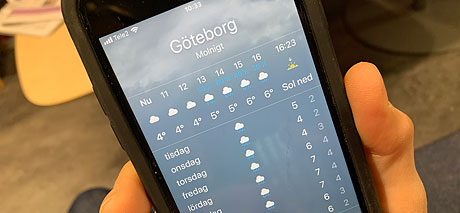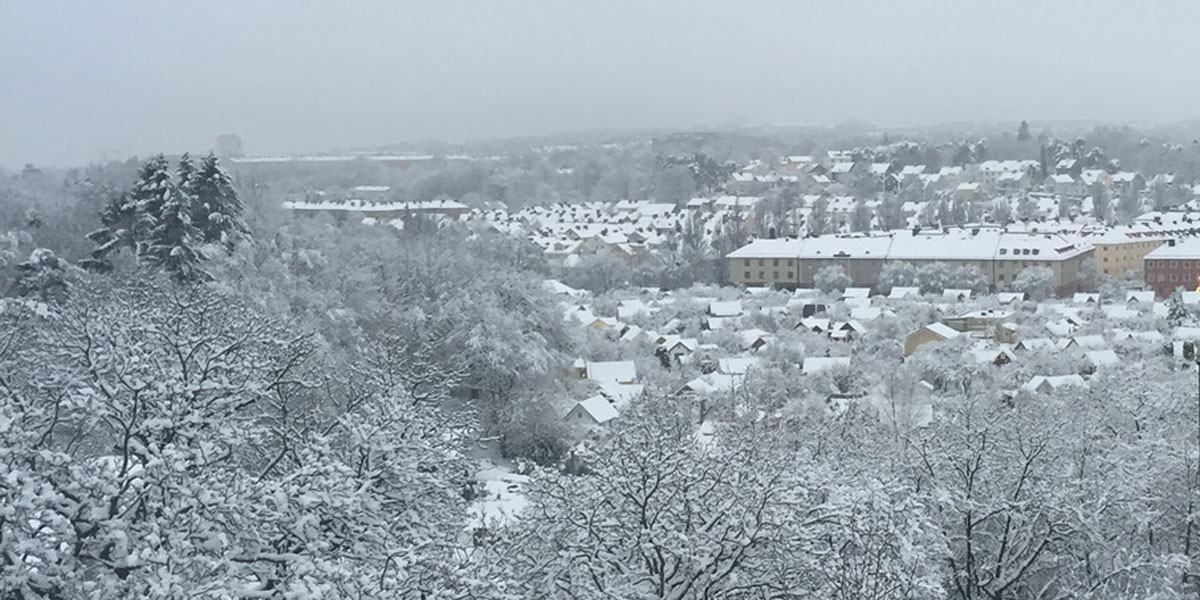- Home
- News and events
- Find news
- No snow, now cold, no winter - is this right?
No snow, now cold, no winter - is this right?

There have been relatively few hours below freezing this winter on the west coast, while we are also seeing unwanted signs of spring in January. It is not possible to say this is caused by climate change based on a single winter, but we can expect more of this type of weather as temperatures rise.
Most of us envision a Swedish winter to be snowy and cold. The definition used by Swedish meteorologists, however, does not require snow. All that is needed is a mean temperature below 0 degrees Celsius for five consecutive days. This has not occurred yet this year, meaning that at the end of January, Gothenburg is still in meteorological autumn, even if the calendar says it is winter.
Air currents determine what the winter months will be like, and these are controlled by the position of low and high pressure systems over the North Atlantic.
“To have a cold winter with snow, cold arctic easterly air currents have to flow over Sweden. So far, this winter has been dominated by south-westerly and some westerly winds that have brought warm air from lower latitudes and from the Atlantic,” says Hans Linderholm, Professor of Physical Geography at the University of Gothenburg.
Hans Linderholm cannot say with certainty that these types of wind that currently dominate and that bring warmer weather are caused by climate changes. Gothenburg has had bad winters before.
“But winter weather that is warmer than we are accustomed to is perfectly in line with what we researchers expect in the future when temperatures rise.”
Spring flowers in January – scary or wonderful?
Under #vårtecken (#signsofspring in Swedish) on Instagram you can find plenty of photos of snowdrops, cherry blooms and budding daffodils with captions like “wonderful” and “finally!”. But is it wonderful with flowering cherry trees in Stockholm in the middle of January? We put this question to Åslög Dahl, a researcher in botany.
“I’m of two minds. Personally, I don’t like winter but I know what is happening isn’t wonderful but instead very scary. That these flowering plants are now a very visible indication that we have had been mild weather and that the mild winters are occurring more and more often matches with the predictions for a warmer climate.
How will Swedish flora change as we shift to a warmer climate?
“It will be easier for invasive plants and fungi to gain a foothold. An example of this is beech trees, which are vulnerable to frost when young, will move further north and will compete with other trees, like birch.”
Researchers assume that climate change will cause the geographic zones to shift north.
“Southeast Norrland will become like today’s Svealand. Here in Götaland, it will become more like the western parts of the European continent. Spruce, which is vulnerable to root rot during warm and humid winters, will likely retreat toward the north-east.”
Eventually, the ecosystem’s balance will change and extreme weather events like storms and fires can create large areas that temporarily lack vegetation. Once growth restarts, other plants will gain a foothold first, meaning that what was once spruce forests will develop over time into forests of aspen, mountain ash, sallow and birch.
Winter 2120, likely no sledding
Even if our weather apps currently show that the mild weather will continue for the coming 10 days, cold and snow can still make an appearance. Historically, February is the coldest month. Even so, one cannot help but wonder if the children of Gothenburg in year 2120 even will know what a sledge looks like.
“Generally, we can say that it will be much warmer so sledding won’t be common in Gothenburg. The snow boundary will move higher and the chance of snow will decrease throughout the country. If we continue in our current trajectory, in 100 years we may not even experience meteorological winter in Gothenburg. Instead, December, January and February will likely be mild and windy,” says Hans Linderholm.

View over Slottsskogskolonin and Majorna/Kungsladugård, Gothenburg, 22 January 2016.